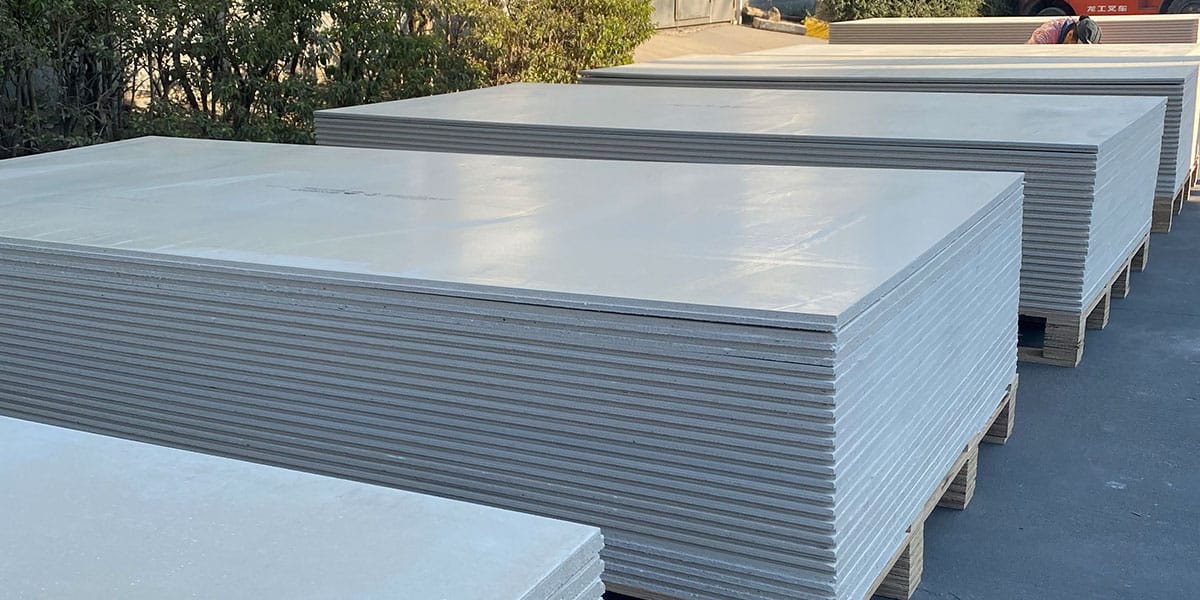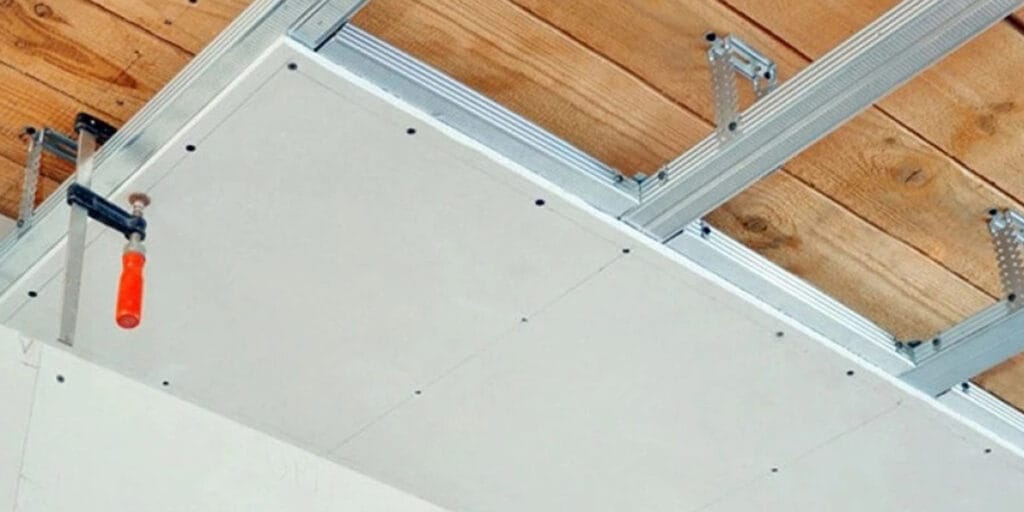
16 Jun Tips for Using Chloride-Free MgO Boards
Table of Contents
Chloride-free MgO board is an excellent choice for building projects. It offers greater strength compared to regular boards and provides superior resistance to scratches and hot water. This eco-friendly panel is designed to handle moisture effectively, making it ideal for outdoor applications. Safe and non-toxic, chloride-free MgO board requires less heat during production, delivering sustainable building solutions without compromising on quality.
Key Takeaways
Chloride-free MgO boards are strong, green, and resist water. They work well for many building jobs.
Look for labels like ASTM or ISO to be sure the boards are safe and good quality.
Install and care for them properly. Clean often and fix damage quickly to make them last longer.
Understanding Chloride-Free MgO Boards
What Are Chloride-Free MgO Boards?
Chloride-free MgO boards are strong building materials made for better performance. They are created using magnesium oxide, magnesium sulfate, and tough fibers, without magnesium chloride. Leaving out magnesium chloride stops rust and makes them last longer. During production, the materials are mixed, shaped, and hardened to make boards that are sturdy, eco-friendly, and moisture-resistant.
These boards have different mineral amounts. Some have up to 10% dolomite, while others have less than 1%. Heating during production removes leftover chlorides, making them more reliable and better for the environment. They are safe and non-toxic, perfect for indoor use where safety and eco-friendliness matter most.
Chloride-free MgO boards are great for projects needing strength, moisture protection, and eco-friendly features.
Benefits of Chloride-Free MgO Boards
Chloride-free MgO boards have many advantages that make them popular in construction:
Durability: They are tough and last a long time.
Eco-Friendly: Making them uses less energy, helping the planet.
Non-Toxic: Safe for indoor spaces, promoting healthier homes.
Protection from Moisture and Mold: They resist dampness, perfect for wet areas.
Versatile Applications: Use them for walls, ceilings, floors, or outdoor projects.
The demand for chloride-free MgO boards is growing fast. In 2022, the market was worth USD 1,557.3 million. By 2030, it may reach USD 2,372.7 million, growing at 5.4% yearly. Another report says it could grow from USD 1.64 billion in 2023 to USD 2.62 billion by 2032. This shows more people want eco-friendly building materials.
Choosing chloride-free MgO boards helps the planet and gives you strong, moisture-resistant materials.
Picking the Best Chloride-Free MgO Board
Checking Quality and Certifications
Always check for certifications when picking MgO boards. These prove the boards are safe, strong, and eco-friendly. Look for labels like ASTM or ISO. These show the boards passed tough tests. Certified boards resist water, impacts, mold, fire, and stay strong.
Certified boards are key for wet or fire-risk areas. They help your building meet safety rules and last longer. Choosing certified boards also keeps indoor spaces safer. They are non-toxic and free of harmful chemicals.
Tip: Ask your supplier for proof of certifications to ensure quality.
Picking the Right Thickness and Size
The thickness and size of MgO boards matter a lot. Thicker boards are better for floors or outside walls. Thinner boards are great for ceilings or room dividers because they are lighter.
Common thicknesses range from 6mm to 20mm. Sizes are often 4×8 feet or 4×10 feet. Think about your project needs. For wet or fire-risk areas, pick thicker boards for more strength and water resistance.
Note: Using the right size and thickness improves performance and cuts waste. This makes your project more eco-friendly.
By choosing certified, strong boards in the right sizes, you’ll get the most out of chloride-free MgO boards for your projects.
Installing Chloride-Free MgO Boards

Preparing the Site for Installation
Getting the site ready is key for installing chloride-free MgO boards. Start by cleaning the area well. Remove all dirt, dust, and loose items. Check for mold, mildew, or wet spots and fix them quickly. Use a moisture meter to ensure the humidity is at safe levels.
Make sure the base is smooth and has no cracks. A flat and stable surface helps support the boards better. If the area is humid or at risk for fires, make sure the base is dry and sealed properly.
Tip: Preparing the site well makes installation easier and improves board performance.
Essential Tools and Materials
Using the right tools and supplies makes installation easier and more accurate. Below is a comparison of tools and materials for chloride-free MgO boards versus regular MgO boards:
Feature | Chloride-Free MgO Boards | Regular MgO Boards |
|---|---|---|
Production Speed | 1,000–1,500 boards/day | |
Lifespan | Longer-lasting | Shorter due to rust |
Mold Resistance | Yes | No |
Impact Resistance | High | Moderate |
Fire Resistance | Better | Standard |
For installation, gather these tools and materials:
Sharp knife or saw for cutting boards neatly.
Rust-proof screws or nails to avoid corrosion.
Waterproof caulk or tape for sealing edges and joints.
Measuring tape, pencil, and level for accurate work.
Safety gear like gloves and goggles for protection.
Note: Good tools and materials lead to better results and fewer mistakes.
Step-by-Step Installation Guide
Follow these steps to install chloride-free MgO boards:
Measure and Cut the Boards: Use a tape measure to find the right size. Mark the boards and cut them with a sharp knife or saw. Make clean cuts to prevent gaps.
Prepare the Base: Check that the base is smooth and dry. Add primer if needed for better sticking.
Place the Boards: Put the boards on the base, leaving small gaps for expansion. Align them carefully for a neat look.
Secure the Boards: Attach the boards with rust-proof screws or nails. Don’t tighten too much to avoid cracks. Space fasteners evenly for stability.
Seal the Edges and Joints: Use waterproof caulk or tape to seal all edges and joints. This keeps out moisture and mold.
Check the Installation: Look for gaps, misaligned boards, or loose screws. Fix any issues for a perfect finish.
Tip: Keep the area ventilated during and after installation to stop moisture buildup.
By following these steps, you’ll enjoy the benefits of chloride-free MgO boards, like eco-friendliness, water resistance, and mold protection.
Ensuring Compatibility with Other Materials
Compatibility with Substrates
To use chloride-free MgO boards well, check substrate compatibility. Substrates are the surfaces that hold the boards, like wood, metal, or concrete. Each type of substrate behaves differently and can affect the boards’ performance.
For instance, wood can expand or shrink with humidity changes. This movement might make the boards less stable. Metal needs rust-proof screws to stop corrosion. Concrete must be smooth and dry to give strong support.
Tip: Test the substrate for moisture and strength before starting. This helps the boards stick better and last longer.
Addressing Common Compatibility Challenges
Some problems may arise when using MgO boards with certain materials. Uneven surfaces can cause gaps or misaligned boards. Fix this by leveling the substrate first.
Another issue is temperature changes. Some materials expand or shrink with heat or cold, stressing the boards. Leave small gaps between boards to allow movement. This stops cracks or warping later.
Chemical reactions can also be a problem. Some glues don’t stick well to MgO boards. Use adhesives made for MgO boards to avoid this.
Note: Solving these issues early keeps the boards eco-friendly and reliable in different conditions.
By checking substrate compatibility and fixing common problems, you’ll make chloride-free MgO boards safer, stronger, and longer-lasting for your projects.
Maintaining Chloride-Free MgO Boards

Routine Cleaning and Maintenance
Cleaning chloride-free MgO boards keeps them in great shape. Regular cleaning stops dirt from piling up and harming the boards. Use a soft, dry cloth or microfiber duster to remove dust. For deeper cleaning, wipe with a damp cloth and mild soap. Stay away from strong chemicals or rough scrubbers that can scratch the surface.
If the boards are indoors, keep the area ventilated while cleaning. This stops moisture from building up. For outdoor boards, rinse with clean water after washing to clear soap. Always dry the boards completely to keep them strong and eco-friendly.
Tip: Clean your boards every few months to keep them looking good and working well.
Repairing Minor Damages
Even tough chloride-free MgO boards can get small damages like scratches or cracks. Fixing these quickly keeps the boards safe and strong. For scratches, gently sand the spot with fine sandpaper. Clean it and add a protective coating after sanding.
For tiny cracks, use a filler made for MgO boards. Spread the filler evenly, let it dry, and sand it smooth. If the damage is big, replace the board to keep it working well.
Note: Always pick repair products made for MgO boards to avoid problems.
By following these care tips, your chloride-free MgO boards will last longer and stay strong and good-looking.
Chloride-free MgO boards are strong, water-resistant, and eco-friendly. They make buildings safer and suit both indoor and outdoor use. By following advice, you can install and care for them properly. These boards provide durable and lasting results. Pick chloride-free MgO boards to create stronger and greener buildings.
FAQ
How are chloride-free MgO boards different from regular ones?
Chloride-free MgO boards don’t have magnesium chloride. This stops rust and makes them last longer. They also handle moisture better, so they’re great for wet places.
Can chloride-free MgO boards be used outside?
Yes, you can use them outdoors. They resist water and are eco-friendly. These boards work well for walls, ceilings, and other outside uses.
How should you care for chloride-free MgO boards?
Wipe them often with a damp cloth and gentle soap. Don’t use strong chemicals or rough tools. Fix small scratches or cracks quickly to keep them strong and looking nice.
